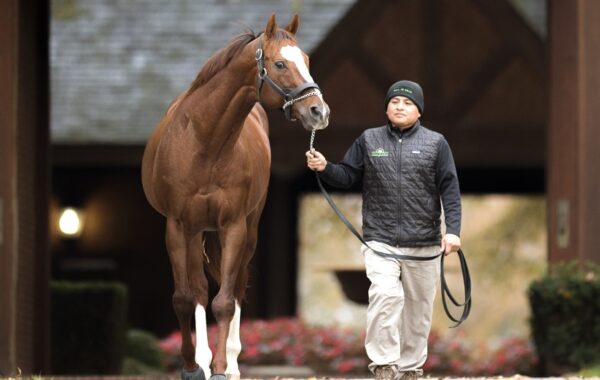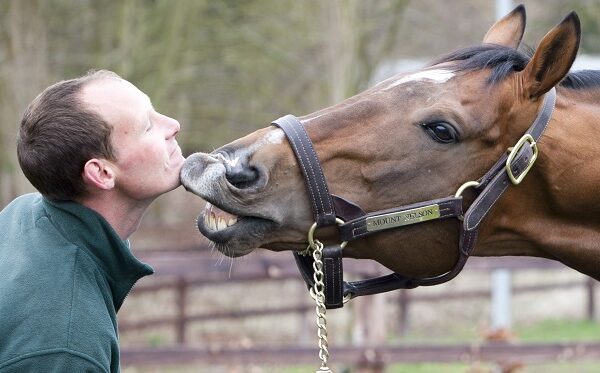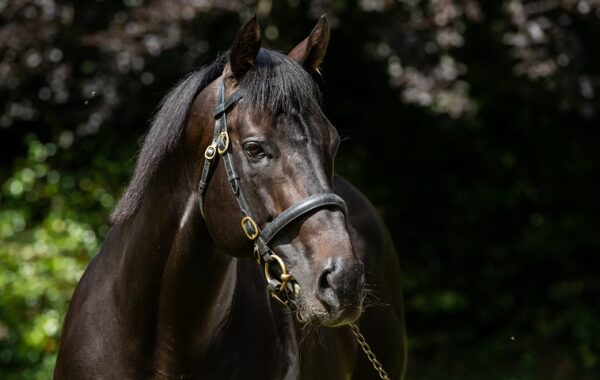The first time I saw Montjeu in the flesh was in the paddock before the Prix de l’Arc de Triomphe in 1999. Any stallion master will tell you that to make it at stud a horse needs the magic trinity of pedigree, performance and looks – occasionally two out of three ain’t bad – but Montjeu had each of those in abundance. He also had swagger.
Experienced paddock watchers might quail to see a horse reluctant to enter the parade ring, as Montjeu was the next time we were on the same racecourse, at Ascot for the King George. To me this just added to his mystique. He was brilliant, he knew it, and he’d enter the paddock when he was good and ready (and, unusually, with his work rider on board).
Watching a member of his first crop, Hurricane Run, win the Irish Derby and the Arc six years later was delicious déjà vu: his father’s son in every way, right down to the single off-hind sock. But by that stage another son, Motivator, had already won the Derby. Montjeu’s stud career was off to a perfect start.
There are few studs where a stallion such as he could be eclipsed but Coolmore has had a ready supply of high-achieving, well-bred sons of Sadler’s Wells and Danehill to fill the ranks, and the year after Montjeu retired, he was followed to Fethard by none other than Galileo.
He was brilliant, he knew it, and he’d enter the paddock when he was good and ready
As Andrew Caulfield highlights in this month’s Caulfield Files, Galileo has outshone Montjeu at stud. Let’s face it, he’s outshone everyone, but he has also had significantly greater opportunity to do so in recent years.
But six years after Motivator triumphed at Epsom, Montjeu has now sired his third Derby winner, Pour Moi, and is also responsible for a trio of Irish Derby-winners, with Fame And Glory and Frozen Fire having added to Hurricane Run’s success. Fame And Glory is even being talked about as a potential multiple Ascot Gold Cup winner to follow in the footsteps of the great Yeats, who is bred on the same Sadler’s Wells-Top Ville cross as Montjeu.
Even more mouth-watering is the prospect of the Ascot Gold Cup winner being aimed once more at the Arc, where he could well meet Pour Moi, who is being given a summer break by Andre Fabre with an autumn campaign in mind.
The great Derby fraud
The Derby winner’s path from last to first at Epsom added extra spice to a race which certainly wasn’t lacking in drama right up to the off. From Carlton House’s injury scare to Kieren Fallon’s dalliance in the High Court, the great race had us in its thrall and held us there way past the finish line, courtesy of the flamboyant antics of Mickael Barzalona.
The Derby may not capture the attention of the wider public in the way it once did, or in the way Royal Ascot continues to do, but for those who love the race and its rich history, a recommended addition to any racing library is the recently published In Search of Running Rein: The Amazing Fraud of the 1844 Derby.
The tale has been painstakingly researched by author Tony Byles, whose daughter Georgina stumbled across a box of case notes and letters relating to the famous scandal of the Derby-winning ringer when working for Newmarket Racecourses. The winner’s true identity was Maccabeus, a four-year-old, owned, like the real Running Rein, by the scheming Abraham Levi Goodman.
The detailed account of the long-held plot – or plots, for Maccabeus was not the only four-year-old in the race and another leading fancy, Ratan, was believed to have been nobbled – to deceive is not the only joy of the book. The inclusion of an exchange of letters, many published in the sporting paper Bell’s Life, between the key characters involved in the fraud is invaluable in bringing the story to life.
That the bit-part player Francis Ignatius Coyle, who helped to abduct ‘Running Rein’ from his trainer’s yard before the trial began, is described as “probably the most unutterable of all unutterable scoundrels ever to have disgraced the Turf” speaks volumes for his low morals.
In the mid-19th century it would appear that he had stiff competition for this title and many of his opponents are present within Byles’s wonderfully reconstructed account of the sinister backdrop to a season described in the Sporting Magazine as “one of the most brilliant Racing Seasons ever known in the memory of man”.
In many quarters, the same is being said of the 2011 Flat season. Good job such skulduggery has long since been stamped out.
• In Search of Running Rein: The Amazing Fraud of the 1844 Derby, by Tony Byles, is published by Apex Publishing Ltd, £12.99





